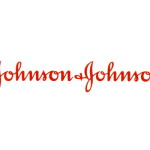 (By You Yunting) U.S. drugmaker Johnson & Johnson (NYSE:JNJ) and Guilin Zhonghui Biotechnology Co., Ltd are in fierce competitions on blood glucose test strips in China. Johnson & Johnson has always accused Guilin Zhonghui Biotechnology Co., Ltd of producing counterfeits of Johnson & Johnson’s OneTouch blood glucose test strips used by patients with diabetes, but did not receive support of the courts in responding litigations. Recently, Guilin Zhonghui Biotechnology Co., Ltd won this dispute through revoking Johnson & Johnson’s ONETOUCH trademark. The followings are the case introduction and our analysis.
(By You Yunting) U.S. drugmaker Johnson & Johnson (NYSE:JNJ) and Guilin Zhonghui Biotechnology Co., Ltd are in fierce competitions on blood glucose test strips in China. Johnson & Johnson has always accused Guilin Zhonghui Biotechnology Co., Ltd of producing counterfeits of Johnson & Johnson’s OneTouch blood glucose test strips used by patients with diabetes, but did not receive support of the courts in responding litigations. Recently, Guilin Zhonghui Biotechnology Co., Ltd won this dispute through revoking Johnson & Johnson’s ONETOUCH trademark. The followings are the case introduction and our analysis.
Introduction to the Case:
Applicant: Guilin Zhonghui Biotechnology Co., Ltd
Respondent: U.S. Johnson & Johnson
Reviewer: Trademark Review and Adjudication Board (the “TRAB”) No.: 关于第3384889号“ONETOUCH”商标争议裁定书
Guilin Zhonghui Biotechnology Co., Ltd, a high-technology company, was the first one to produce blood glucose test strips in China and thus is reported its production of blood glucose test strips to Guangxi Bureau of Quality and Technical Supervision and Guangxi Food and Drug Administration in 2000.
U.S. Johnson & Johnson applied for “ONETOUCH” trademark (the “disputed trademark”) under Class 5 on November 27, 2002 and received registration numbered 3384889 for blood glucose test strips on July 21, 2004.
Guilin Zhonghui Biotechnology Co., Ltd filed an opposition to the TRAB, alleging that the Johnson & Johnson’s “ONETOUCH” trademark contained a space differentiating from the English phrases “ONE TOUCH” and thus was approved for the product of blood glucose test strips which constituted an improper registration that merely indicate the use, function or other features.
U.S. Johnson & Johnson argued that the ONETOUCH trademark was meaningless, differentiating from the “ONE TOUCH” mark claimed by the applicant.
The TRAB thought the key point of this dispute between U.S. Johnson & Johnson and Guilin Zhonghui Biotechnology Co., Ltd was focused on whether the disputed trademark was conformed to the Item 2, Paragraph 1 of Article 11 of the Trademark Law. The TRAB heard the case and held that:
- It is difficult for general consumers to distinguish the difference between the disputed trademark and English medical term “ONE TOUCH” because they are similar marks. U.S. Johnson & Johnson cannot provide adequate evidences for proving the disputed trademark to reproduce a unique corresponding relationship and thus the disputed mark was merely indicated the characteristics of products.
- Considering Guilin Zhonghui Biotechnology Co., Ltd once used “ONE TOUCH” mark on the product of blood glucose test strips before the registration day of the disputed trademark, all the evidences provided by U.S. Johnson & Johnson come from the day after the registration day. Therefore, the respondent cannot use those evidences to prove the disputed trademark to be with obvious characters and expel others to use English words “ONE TOUCH”.
Therefore, the TRAB made a ruling to revoke U.S. Johnson & Johnson’s “ONETOUCH” trademark numbered 3384889.
Lawyers’ Comment:
1. Marks that merely indicate the function, names or model numbers of the goods shall not be registered as trademarks
Article 11 of the Trademark Law regulates, the following signs shall not be registered as trademarks:
(1) Names, devices, or model numbers that are generic to a class or group of goods;
(2) Marks that merely indicate the quality, principal raw materials, function, use, weight, quantity or other features of the goods on which the marks are used;
(3) Marks that lack distinctive characteristics.
The signs referred to in the preceding paragraph may be registered as a trademark where it has acquired distinctiveness through use and is readily distinguishable.
In this case, for “ONETOUCH” used on the blood glucose test strips, the TRAB’s ruling that the mark merely indicates the function of the goods was clearly justified. But U.S. Johnson & Johnson also had its remedy that the disputed trademark has acquired distinctiveness through use and is readily distinguishable so as to be registered as a trademark.
2.The applicant shall submit evidences that the sign has acquired distinctiveness through use and is readily distinguishable before the application.
We always encounter such problem that our customers would apply for a sign that merely indicate model names, function, names or principal raw materials of the goods on which the marks are used. We would first suggest our customers to submit an application and then use the signs applied so as to acquire distinctiveness. When the application was removed twice by the CTMO, customers would file a review with the Trademark Review and Adjudication Board on the grounds that the sign has acquired distinctiveness through use and is readily distinguishable. At this moment, there is a large possibility to be registered as a trademark.
Why do customers apply for twice? The first application conforms to the “first to file” application as regulated in the Trademark Law. Prior use without first application may lead to trademark squatting. Therefore, the second review must be the key point of acquiring a registered trademark.
In this case, we think Johnson & Johnson would also take similar strategy. The difference is that Johnson & Johnson acquired registration of its trademark at the first time. This leads another party in the proceeding of a trademark removal to inadequate prove a prior use preceding the application. On the contrary, Guilin Zhonghui Biotechnology Co., Ltd submitted evidences that are used before its application.
Lawyer Contacts
You Yunting:86-21-52134918 youyunting@debund.com/yytbest@gmail.com
Disclaimer of Bridge IP Law Commentary
Short Link:
